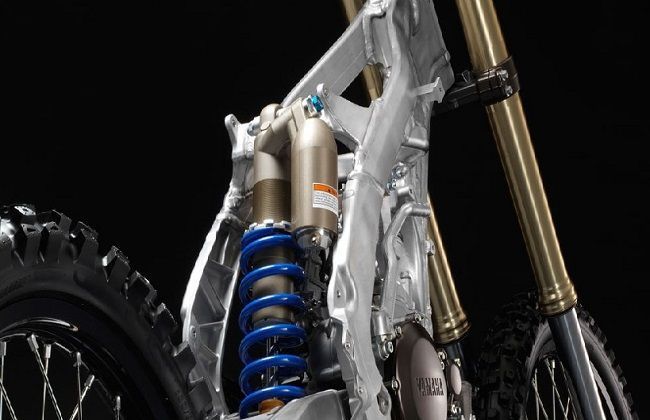Motorcycle Suspension: All You Need to Know
Modified On Jan, 2025 By Pradeep Shah
- 17159 Views
A motorcycle suspension setup primarily consists of two telescopic tubes at the front and a swingarm mounted with twin or single shock absorber at the rear. Now a days, monoshock or single shock absorber at the rear is preferred in most of the bikes because of its better performance and sporty looking characteristics. The suspension system of a motorcycle primarily has two aims: to handle the stability and keep the balance during braking and secondly, to offer comfort to the rider and pillion during bumps and uneven surfaces.

Following are the in-depth details of a motorcycle suspension system and the important aspects relating it:
1. Front Suspension:
Conventional Telescopic Forks:

Telescopic forks are the most common form of front suspension. The setup is quite simple and consists of long hydraulic tubes with coil spring fitted internally. The top of these forks are connected to the frame of the motorcycle in a T-clamp while the other end is fitted to the front wheel’s axle. The lower portion of fork bodies slide up and down the fork tubes in case of road imperfections and hence absorbs the vibrations. The inside is filled with oil in order to ensure the smoothness of operation and is locked inside through an oil seal.
Upside Down Forks (USD):

Inverted or upside down forks are nothing but the conventional telescopic forks set in an inverted manner. In these, the slider bodies are at the upper portion while the tubes at the bottom. Now a days, these are primarily used in high end bikes as they decrease the total unsprung weight of the motorcycle along with increasing torsional stiffness that results in improved handling.
Important Terminologies:
Pre-Load Adjustment: It refers to the procedure used to adjust the initial position of suspension with weight of motorcycle and rider acting on it.
Fork Damping: It is an influence within forks due to the effect of reducing, restricting or preventing the oscillations.
Brake Dive: When the brakes are applied, the added load on the front wheel causes the front end of the bike to go lower and hence resulting in the compression of forks. This reduction in length of forks is known as Brake Dive.
2. Rear Suspension:
Earlier, rear suspension was not used in motorcycles and ride quality was maintained by front forks only. However, with the advancement in technology, manufacturers started adopting rear suspension and are in practice even today. Swingarm and coil springs are the main components of rear suspension system.
Swingarm:

A motorcycle swingarm can be assumed as a quadrilateral portion of a motorcycle in which the shorter side is connected to the motorcycle’s frame and the other side is bolted on the rear wheel axle around which the wheel turns. In many motorcycles, the swingarm is present only on one side of it and is called single-sided swingarm. Though it brings with it the ease of removing the rear wheel without much effort, it increases the unsprung weight of rear suspension. That’s the reason why single-sided swingarm is not commonly used. With a swingarm, basically two types of suspension are used:
Twin shock absorbers:

As the name suggests, it refers to two shock absorbers at the rear end of a motorcycle. Firstly used in the off-road motorcycles of 1970s and 80s, these gave a benefit of increased rear wheel travel due to which they were highly accepted.
Mono Shock Absorbers:

With the passage of time, manufacturers started implementing mono shock absorbers in their motorcycles due to many reasons. After research, it was found that monoshocks delivered a far better performance than the conventional twin shock absorbers. In this setup, a single shock absorber is connected from the swingarm to the motorcycle’s frame. It is not directly connected to the swingarm, instead uses a linkage, which helps in providing a rising rate of damping to the rear. Furthermore, monoshocks eliminate torque from the swingarm more efficiently, offers better handling and stability and are easy to adjust than twin shock absorbers as only one unit is used.
